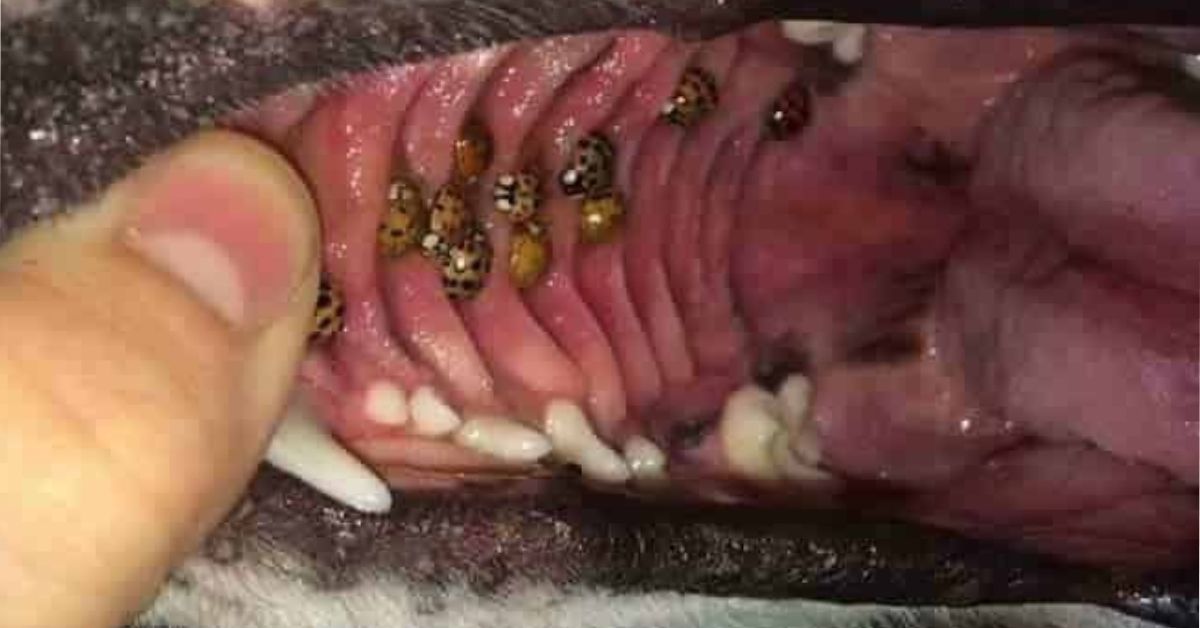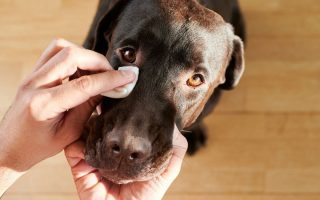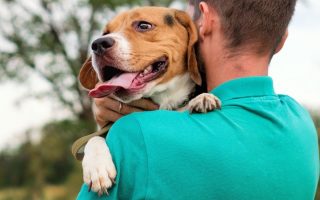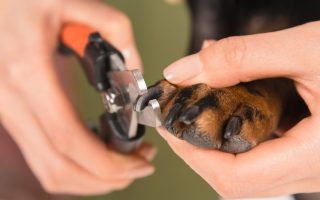Asian Ladybugs Causing Problems for Dog Owners
In the past a picture of a Kansas dog named Bailey had made the rouns on the internet.
The reason is disturbing and rare.
The roof of this dog’s mouth was infested with Asian ladybugs, entrenched in a cluster.
The photo was first shared by a vet and broke the internet in no time with the caption, “somebody asked me to pass this along….”
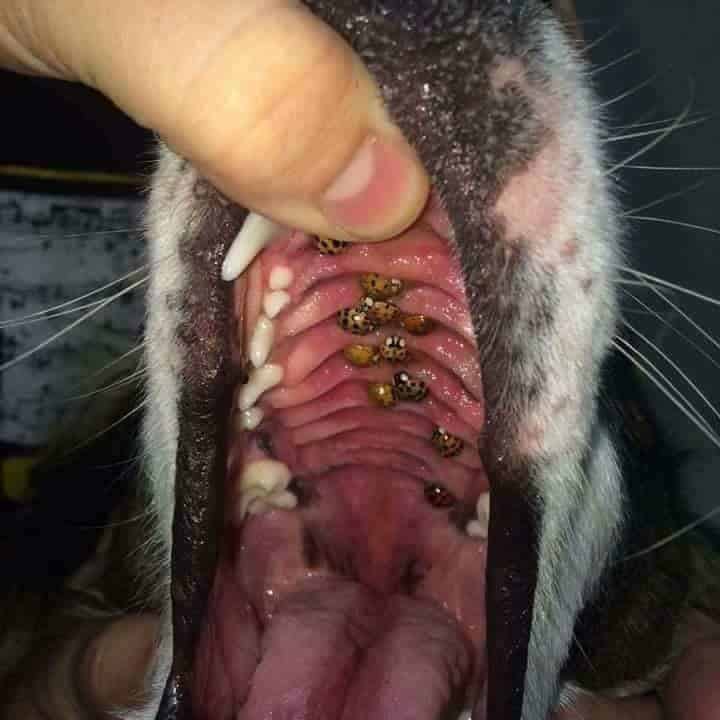
It was quite evident from the caption that it was vaguely written and there was nobody to put to blame for this graphic image.
The issue left tick and flea infestation far behind and merely imagining all the potential hazards the ladybugs could inflict in the pooch’s body was enough to bring chills down the spine of every dog owner who came across this cringe-worthy post.
There were opposing views as to whether the picture was photoshopped or a real problem.
A Florida based Dog Shelter and rescuer, Hands and Paws wrote to many media houses that claimed to address to several cases like this one.
These weren’t the regular, harmless ladybugs people spot in their surroundings but a massive, hurtful and in most cases, poisonous Asian lady beetles.
According to Dr. Mitchell, who posted the photo on Hoisington Veterinary Hospital’s Facebook page, if left untreated, the infected dog is bound to suffer from long-term health issues.
These deadly-looking bugs cause ulcers in the dog’s mouth, resulting in bad breath, excessive drooling, and foaming.
The ladybugs can also make your dog feel sick and irritated. The bugs feed on the dog’s blood, making the dog feel hollow on the inside.
Can Ladybugs Cling to the Roof of a Dog’s Mouth?
As opposed to what the Hospital and the practicing vets suggested and claimed about the ladybugs, many experienced Veterinarians claimed that the post was a publicity stunt, the attention seeking alarmism today’s internet is brimming with.
People would do anything and everything for likes and views.
This viral post was yet another click-bait for the page to fetch more and more attention and for dog lovers to freak out and get more confused.
These vets also claimed that no beetle or bug would attack or get embed to a dog’s mouth on its own or like a flea or a tick. It is the other way round.
If a dog tries to attack or eat the bugs, it will most likely be infested with the bugs, with some sticking to its mouth’s roof in clusters.
The beatles or Asian Bugs then produce toxic chemicals to cause chemical burns in the mouth, ulcers in the gastrointestinal tract, severe stomach pain, and fatal hemorrhagic gastroenteritis.
These immensely painful issues pop up as an aftermath of Ladybug’s chemical defense system.
What Can I Do if My Pup is in This Situation?
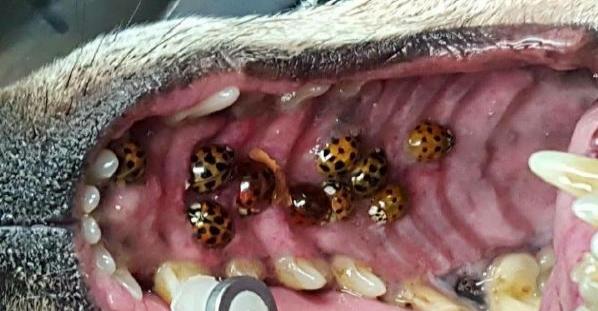
In such situations it is only right to take your dog to a vet and discuss the matter.
Not only will the vet thoroughly clean up the dog’s mouth but will also prescribe proper medication to prevent such mishaps.
It is also advisable to regularly give deworming pills to your dogs and chewy treats to keep the bugs at bay.
If checked on time, the bugs can be scraped off with a spoon easily without causing any damage to the dog.
So far, there has been only one documented case of bug infestation so there’s certainly no need to panic or go about locking up your dog in the house and keeping them away from the greens.
The unlikely situation, though hard to believe and even harder to look at, has gained attention after Bailey’s pic went public.
Bailey was often seen catching and feeding on insects and bugs and it comes as no surprise that the bugs got stuck in its mouth.
The bugs could have traveled all the way to the stomach but because of the sticky mucus they secrete right after entering the mouth, they cling to the mouth’s roof and cause the dog to lose appetite, feel lethargic, irritated and drool profusely.
While it is still not clear whether the picture was photoshopped or real, it is always good to take precautions.
10 Simple Tips to Prevent Your Dog from Catching any Bugs
- Bathe your dog once a week with an anti-tick and flea shampoo and conditioner. This will also reduce any odors and risk of fungal infection. You can also add disinfectant to the tub of water.
- Brush their teeth regularly with a leave-in toothpaste like the ones used for infants. Clean it off with damp cotton swab if the dog gets irritated or doesn’t like the aftertaste.
- Make sure to feed your pup high quality dog food and drink enough water to wash off any harmful insects, bugs or ticks.
- Use anti-tick spray to prevent contact with any ticks, flea, etc. If you spot a tick, use tweezers to weed them out completely.
- Keep them hydrated with fruity popsicles, and ice cubes.
- Avoid excessive feeding with milky human foods as this will increase the chance of infection.
- Clean the infected area with disinfectant to avoid infection.
- Regular visits to the vet and regular vaccines against rabies and other diseases should be a priority.
- Do not allow water to stagnate anywhere in the house. This invites breeding of mosquitoes and other insects not visible to the naked eye.
- Get pest-control done in the house every six months. A pest-free and the insect-free environment is the only solution to help prevent your dog from infected.

